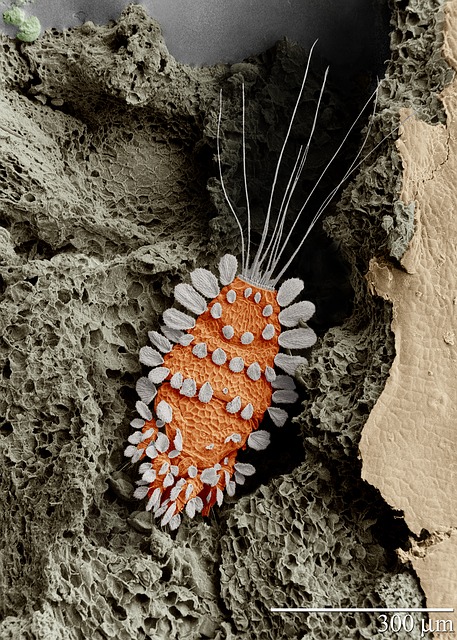Allergy Testing
Finding out the true cause of allergy, have a safe life

What is allergies?
When the body’s immune system is reacting negatively to substances, usually harmless to, develop allergies. Allergenic antigens enter into our bloodstream, causing inflammation.
Below are the symptoms:
Sneezing; Itching of the nose, eyes or roof of the mouth; Runny, stuffy nose; Watery, red or swollen eyes (conjunctivitis); Tingling in the mouth; Swelling of the lips, tongue, face or throat; Hives; Anaphylaxis; Hives; Itchy skin; Rash Facial swelling; Wheezing; Anaphylaxis; Loss of consciousness; A drop in blood pressure; Severe shortness of breath; Skin rash; Lightheadedness; A rapid, weak pulse; Nausea and vomiting.

What is food allegry?
A food allergy manifests when the immune system mistakenly treats food as a substance as harmful to the body, producing a response that causes inflammation of the body. An allergic reaction produced by an Ige anti-body is commonly referred to as an “IgE Food Allergy” and an allergic reaction produced by an IgG antibody is often referred to as an “IgG Food Sensitivity”.
The proportion of people suffering from allergies worldwide is on an increasing trend, currently affecting more than 30-35% of the total population.
Immediate Allergic Response (IgE) vs Delayed Allergic Response (IgG)
Signs from an Immediate Allergic Response are obvious, and symptoms usually manifest within a short period after consuming the trigger food. Since the reaction is immediate, it is far easier to identify the food responsible.
How do you know if you suffer from IgG Food Sensitivity
By measuring the test subjects’ concentration of antibodies to various foods, we can determine which foods will prove a greater health risk to each individual.

Microarray
Microarrays consist of probes that are arranged or “arrayed” on a glass chip. These probes could be small fragments of DNA or protein that represent a section of a specific gene’s entire DNA sequence and track the interaction of the captured proteins, respectively. Microarrays are robust tools for diagnostics because they measure large numbers of analytes simultaneously and can answer multiple diagnostic questions with one array.
The technique, Microarray-based ELISA, is used in IgG Food Sensitivity Screening Test, where the test subject’s blood sample is applied onto a specially designed microarray chip and put through a specific testing procedure and data analysis. After the process is complete, the test subject will receive a report on their own delayed allergic response.
Microarray-based ELISA technology for the IgG Food Sensitivity Screening Test is utilized in more than 100 laboratories worldwide. Since 2007, tens of thousands of tests were provided to individuals containing valuable nutritional information that is instrumental in improving their health.
IgG Food Sensitivity Screening Test contains over 220 foods/elements that cover the vast majority of the nine categories on the daily diet ( see sample image). It is the only test in Hong Kong that have such a wide variety of food types during the IgG Food Sensitivity Screening Test.
Potential Cause of Allergies

Grass Pollen
Common reed
Cultivated rye, Pollen
Bermuda grass
Perennial Ryegrass
Bahia grass
Timothy grass

Tree Pollen
Cottonwood
Tree of Heaven
Cypress
Ash
Acacia
Alder
Sliver birch
Paper mulberry
Hazel pollen
Sugi
Beech
Ash
Walnut Pollen
Mountain cedar
Mulberry
Olive
Date palm
London plane tree
Elm

Weed Pollen
wall pelitory
common pigweed
lamb’s quarter
hemp
Russian thistle
Ragweed
mugwort
Annual mercury
Robwort
Russian thistle
Nettle

Mites
House dust mite
Tyrophagus putrescentiae
acarus siro
blomia tropicalis
Glycyphahus domesticus
Lepidoglyphus destructor
tyrophagus putrescentiae

Microorganisms & Spores
Malassezia symodialis
yeast
molds
Aspergillus fumigatus
Cladosporium herbarum
Alternaria alternata
Penicillium chrysogenum

Legumes, Spices, and Cereals
Peanut
White Bean
Peanut
Chickpea
Soy
Lentil
Pea
Cereals
Common Buckwheat
Oat
Rice
Quinoa
Cultivated rye
Lupine seed
Maize
Barley
Spelt
Millet
wheat
Anise
Paprika
Caraway
Oregano
Parsely
Mustard

Fruits & Vegetables
Kiwi
Blueberry
Papaya
Pear
Kiwi
Orange
Melon
Fig
Strawberry
Apple
Mango
Banana
Cherry
Peach
Grapes
Onion
Carrot
Garlic
Celery
Avocado
Potato
Tomato

Nuts, Cashew & Seed
Almond
Cashew
Macadamia
Hazelnut
Brazil nut
Pecan
Hazelnut
Walnut
Pistachio
Pumpkin seed
Seasame
Sunflower seed
Poppy seed
Fenugreek seeds

Seafood
Tuna
Clam
Black Tiger shrimp
Swordfish
Herring worm
Crab
Herring
Brown shrimp
Carp
Atlantic cod
Lobster
Shrimp
Squid
Common mussel
Oyster
Scallop
Thornback ray
Salmon
Atlantic Mackerel

Animal Food
House cricket
Mealworm
Migratory Locust
Chicken meat
horse, meat
Cattle, meat
Turkey meat
Rabbit Meat
Sheep Meat
Pork
Egg white
Egg yolk

Hymenoptera venoms
fire ant poison
Honey Bee Venom
Wasp Venom
hornet
paper wasp venom
Cockroach
American Cockroach
German Cockroach

Pet and others
Dog
Male dog urine
Guinea pig
cat
House mouse
Rabbit epithel
Djungarian hamster
Rat
Cattle
Goat, epithel
Horse, Epithel
Sheep, Epithel
Pig
Latex
Weeping fig
Hom s Lactoferrin
Pigeon tick
